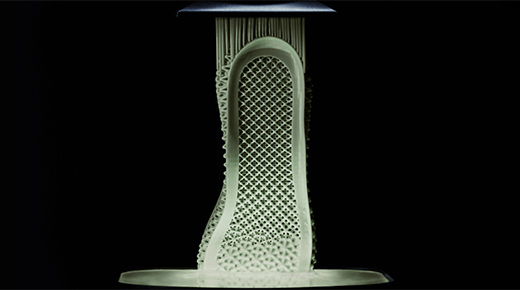An Adidas running shoe Futurecraft 4D midsole is printed on an industrial 3-D printer made by Carbon. The printer uses light and oxygen to create intricate designs, such as the varied lattices seen here, from a liquid resin, in a variant of stereolithography. CREDIT: ADIDAS
This story was originally published by Knowable Magazine.
Since May 2015, in a section of its WorldPort distribution center in Louisville, Kentucky, United Parcel Service (UPS) has been operating a spare parts warehouse with no spare parts. Instead, the facility is stocked with ultrafast 3D printers that can build up almost any plastic part that’s required, layer by layer by layer—and have it ready for UPS to deliver anywhere in the United States by morning.
|
ADVERTISEMENT |
“It was a no-brainer,” says Alan Amling, UPS’s vice president for corporate strategy. Storing spare parts for quick delivery was already a big moneymaker for the company, he says. UPS operates more than a thousand field-stocking locations worldwide—all full of items that somebody might need someday, maybe. The industrial customers who pay for that service have to keep the parts available because of warranty contracts, says Amling. But they hate it. “Inventory storage costs are massive,” he says. “So we started to see 3D printing as a solution.”
…

Comments
Additive- The Wild West of Manufacturing
For all its promise and potential, additive manufacturing is, in fact, the wild west of manufacturing. For several years, the America Makes & ANSI Additive Manufacturing Standardization Collaborative has been working diligently to identify needed industry standards covering additive. The second version of "Standardization Roadmap for Additive Manufacturing" has just been published. It is available at Standardization Roadmap for Additive Manufacturing (Version 2.0)
Add new comment